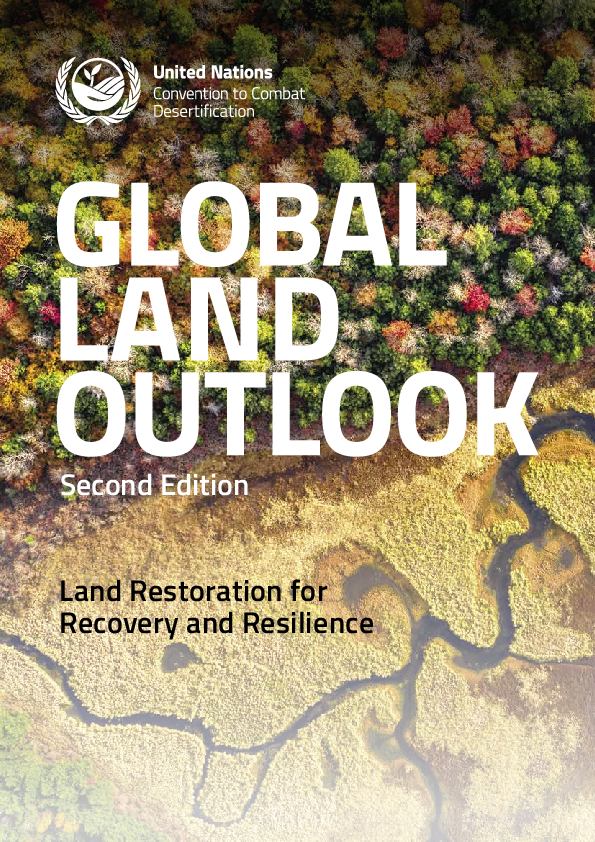- Share this article
- Subscribe to our newsletter
Global Land Outlook 2
The Global Land Outlook 2 (GLO2) report published by the United Nations Convention to Combat Desertification (UNCCD) in May 2022 offers an overview of unprecedented breadth and it projects the planetary consequences of three scenarios through 2050: business as usual, restoration of 50 million square km of land, and restoration measures augmented by the conservation of natural areas important for specific ecosystem functions.
It also assesses the potential contributions land restoration investments would make to climate change mitigation, biodiversity conservation, poverty reduction, human health and other key sustainable development goals. GLO2 offers hundreds of examples from around the world that demonstrate the potential of land restoration.
Poor rural communities, smallholder farmers, women, youth, Indigenous Peoples, and other at-risk groups are disproportionately affected by desertification, land degradation and drought. At the same time, traditional and local knowledge of Indigenous Peoples and local communities, proven land stewards, represent a vast store of human and social capital that must be respected and can be used to protect and restore natural capital.
GLO2 offers hundreds of good-practice snapshots from around the world that illustrate context-specific measures to combat environmental degradation, restore land health and improve living conditions.
Many regenerative agriculture practices have the potential to increase crop yields and improve their nutritional quality while reducing greenhouse-gas emissions and drawing down carbon from the atmosphere, the report says.
Examples include rewilding – reducing the human footprint to allow natural ecological processes to re-establish themselves – in the Greater Côa Valley in northern Portugal and the Iberá wetlands in Argentina; drought preparedness and risk reduction through national programmes in Mexico, the USA and Brazil; sand- and dust-storm source mitigation in Iraq, China, and Kuwait; and gender-responsive land restoration in Mali, Nicaragua and Jordan. There are also cases of integrated flood and drought strategies as well as forest landscape restoration using high-value crops.
Good practices can involve terrace and contour farming, conserving and restoring watersheds, and rainwater harvesting and storage. In addition to their economic benefits, these measures improve water retention and availability, prevent soil erosion and protect biodiversity habitat.
(UNCCD/ile)
Read more and download the Global Land Outlook 2 at UNCCD website





Add a comment
Be the First to Comment